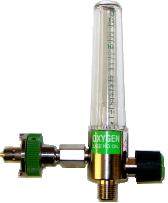High RM - well, yeah, I hate airbags and would
disconnct them if I had them. It's not the technology I mistrust - it's
the agendas behind it.
How does the absolute O2 pressure regulator
work?
Rick L
----- Original Message -----From: rick millerSent: Wednesday, December 21, 2005 7:35 AMSubject: Re: [PSUBS-MAILIST] o2 controlrickI agree with the kiss design with one exception. 72 hr life support requirement means some sleep time. ie unable to monitor cabin pressure. which is why i suggested using an absolute pressure o2 regulator to maintain the cabin o2 level without having to worry about it. cost about 200.00$while kiss is the basic principal design idea, it should not superceed safety. Life support should be automatic and nonelectrical in the event of power failure. using just a flow controller could cause a increase in the o2 level to a dangerous point, remember the nasa fire.the cost of 72 hr life support 2 men2 ea. 02 grade pressure regulators and piping 400.002 ea o2 clean tanks 80 cf 300.002 ea litium hydroxide co2 scubbers passive blanket type 850.001 ea flow controller backup to pressure regulator 51.001 ea absolute pressure regulator 200.00total 1801.00Abs and pvho are the bible to follow, the rules are there for a reason. The only part i have a problem with is the storgae of the o2 tanks inside the hull. abs bans this because of pressure increase and o2 level increase. however the primary point of failure in these system are the regulators and the piping which is already inside the sub hull.while you can save money in alot of places this should not be it, would you buy a car with out air bags if you could.rick m----- Original Message -----From: Rick and MarciaSent: Tuesday, December 20, 2005 10:51 AMSubject: Re: [PSUBS-MAILIST] o2 controlIn support of Hugo's response, Keep It Safe and Simple (and cheap) - The KISS formula.Taught to every first year engineering student.The metre shown below is dead easy to use (no pun intended). There is a little black ball that floats up the graduated glass tube. You want 4 litres? Turn the little knobby until the black ball floats up to "4" and, well, breathe.Air fouled in the cabin? Slip an oral/nasal mask onto the nipple that screws onto the threaded fitting at the bottom. The nipple costs, oh, about $0.25 USD :-) I'm sure they'll throw that in. The metre too far from the cockpit seat for the mask? Run an 02 extension line (about $1.00) from the flowmetre to the instrument panel. Plug your mask in there. Hell, forget the buck - I'll acquire one for you and mail it to you.Broken? Unscrew it by hand from your wall mount. Really broken? Replace it for $51 USD.No computer, no electronics, no power supply, no software failures, NADA NADA NADA.EnjoyRick LVancouver
Oxygen Flowmeter
These precision Medical Flowmeters are available in both a rugged chrome plated brass and an aluminum body model. Features a 0-15 LPM flow rate, Lexan flowtube and positive shut-off control valve that will not drift from a set flow rate over extended durations. [More Info]----- Original Message -----From: Hugo MarreroSent: Monday, December 19, 2005 11:49 AMSubject: RE: [PSUBS-MAILIST] o2 controlHey guys,I assume that just about everyone here is limited in funds to build your sub. The more complex systems are their likelihood to fail is higher and the cost of repair is equally expensive. An O2 System does not have to be so complex, all you need is a needle valve in series with a flow gauge (calibrated for O2) for you to set the proper flow. There are all kinds of portable O2 monitors that you can get for $200 bucks and that is what you use to keep an eye on your O2. They even have Low and high and low level alarm settings which if set properly will give you plenty of time to adjust your O2 flow.In my personal experience with many submersibles I have yet to see an automatic computer-controlled O2 system aboard any of the submersibles that I have worked with. And the comments I have heard from the ones that do have it is that they are a pain in the ass to maintain. I am not against it as I am a tech junkie myself. However one must ask the question..... Is this really necessary? Do I really need it? Or is it just a gadget I like?The JSL sphere is roughly 55 cuft and I rarely ever have to make an adjustment to the O2 system. I have even turned off the O2 to see how long it takes to trigger a low alarm (Ours is set at 19%) and it takes about 30 minutes to drop 2%. However, it is a good piloting practice to monitor your instruments constantly (every 5 minutes is a good ballpark figure). I guarantee that this practice alone will keep you out of trouble and on top of your life support system with very little maintenance..Any ways, just a thought...Hugo-----Original Message-----
From: rick miller [mailto:rickm@pegasuscontrols.com]
Sent: Monday, December 19, 2005 1:22 PM
To: personal_submersibles@psubs.org
Subject: [PSUBS-MAILIST] o2 controlbrianthe sensors that you are looking for are teledyne analytical instrumentsclass r-22d, o2 sensors. they put out a milli volt singal directly perporsional to the amount of o2 present the average output is 7-13 mv in air at stp. the need to be loaded with a 10k resister. Measure the output with a milli volt meterany kind will do. if the voltage drops ten percent you know that your o2 levels droped ten percent.o2 control can be done three ways.1.o2 level monitoring with a solinoid for injectionpros hands off automatic controlcons expensive and complex2. automatic pressure controller maintain sub internal pressure to a fixed pointpro single controller all mechaincal/ about half price of electricalcon compressed air leak internal inside sub will shut down system3. adjustable flow controller manualpro cheapestcon requires continous monitoringhope that this helped for your design ideasrick m
